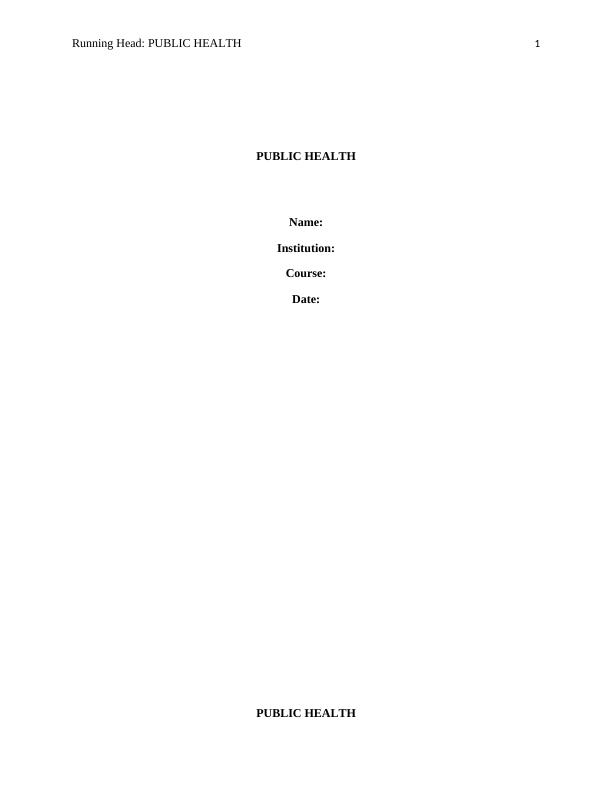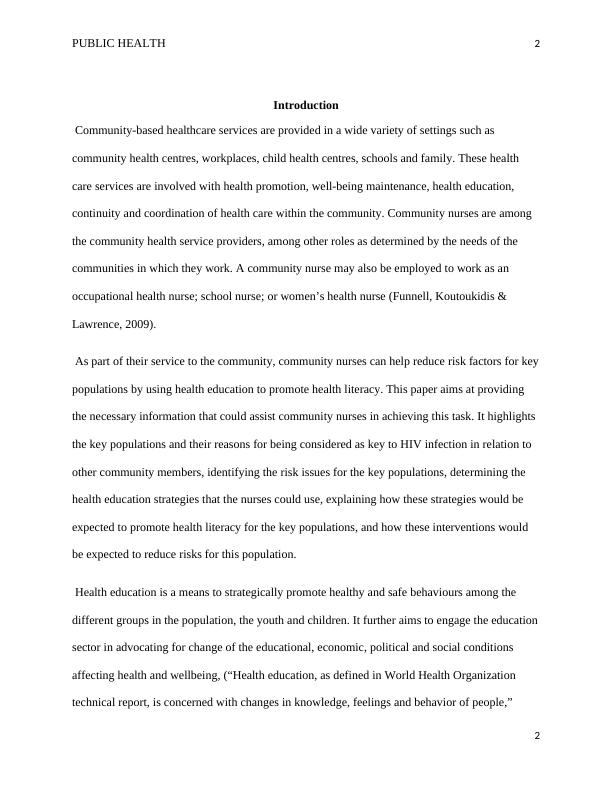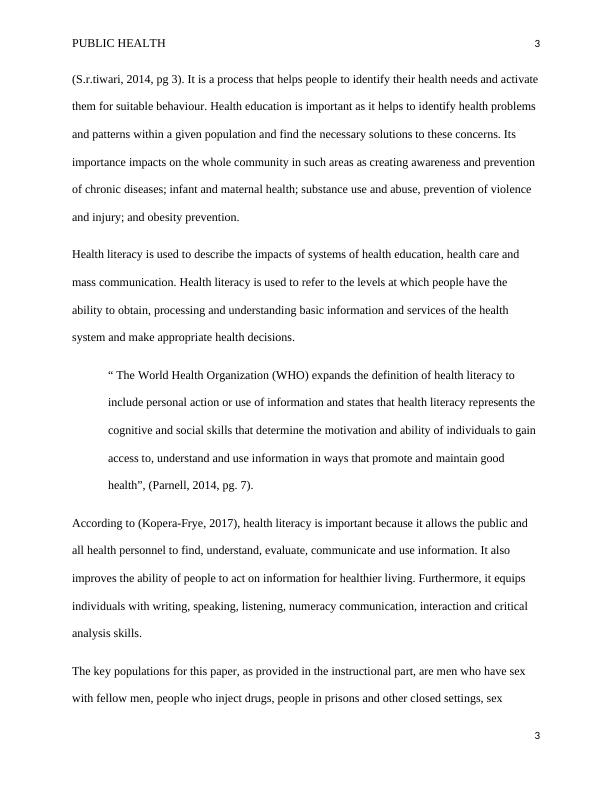Reducing HIV Risk Factors Among Key Populations: Health Education Strategies for Community Nurses
This assignment requires a discussion on how community nurses can use health education to promote health literacy and reduce risks for key populations, specifically those at risk of exposure to HIV and people living with HIV/AIDS. It also includes a summary of health education and health literacy, a description of risk issues affecting key populations, and a discussion on how community nurses can use health education to address these issues.
Added on 2023-06-12
About This Document
Reducing HIV Risk Factors Among Key Populations: Health Education Strategies for Community Nurses
This assignment requires a discussion on how community nurses can use health education to promote health literacy and reduce risks for key populations, specifically those at risk of exposure to HIV and people living with HIV/AIDS. It also includes a summary of health education and health literacy, a description of risk issues affecting key populations, and a discussion on how community nurses can use health education to address these issues.
Added on 2023-06-12
End of preview
Want to access all the pages? Upload your documents or become a member.



